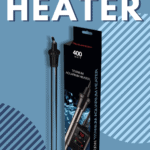Did you know that temperature shock is a major cause of mortality in tropical fish? Temperature shock happens when the water is too warm or too cold for the species in the aquarium.
So, if you keep tropical fish, a reliable, safe water heater for fish tanks is crucial. But with so many different styles and brands of heaters to choose from, it can be challenging to pick the best aquarium heater for your needs.
With that in mind, we’ve put together this comprehensive aquarium heaters review guide so that you can be confident in making the correct decision.
Quick Comparisons of the 5 Best Aquarium Heaters
| IMAGE | BRAND | DETAILS | |
|---|---|---|---|
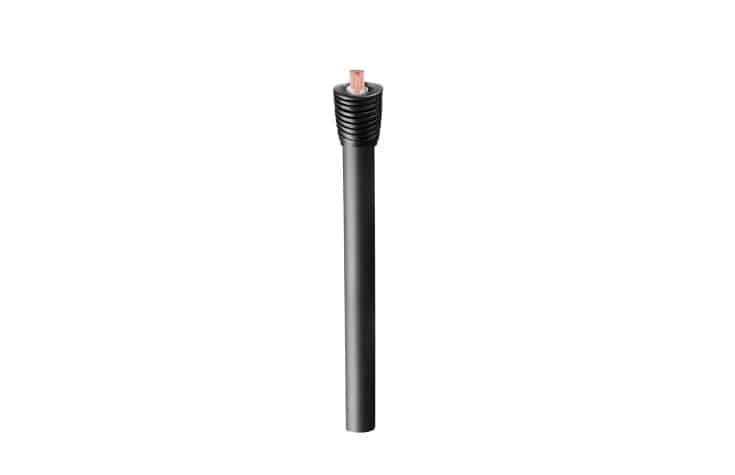 | Aqueon Aquarium Heater |
| View Product |
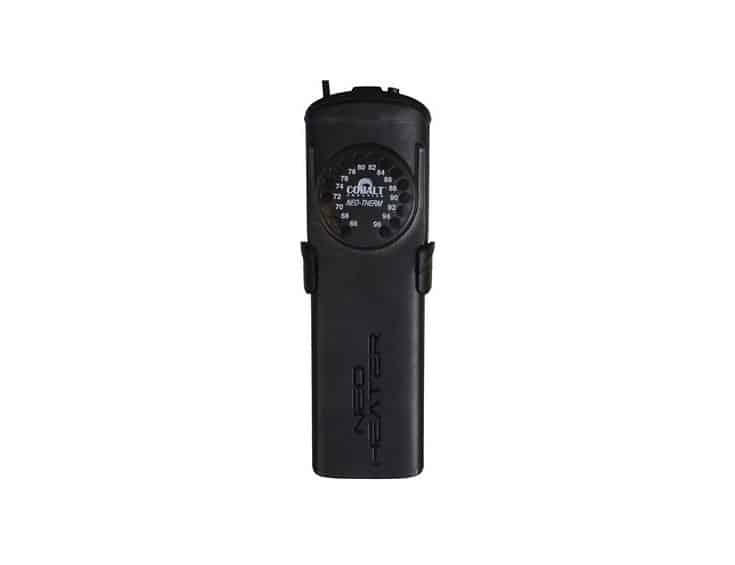 | Cobalt Neo-Therm Heater |
| View Product |
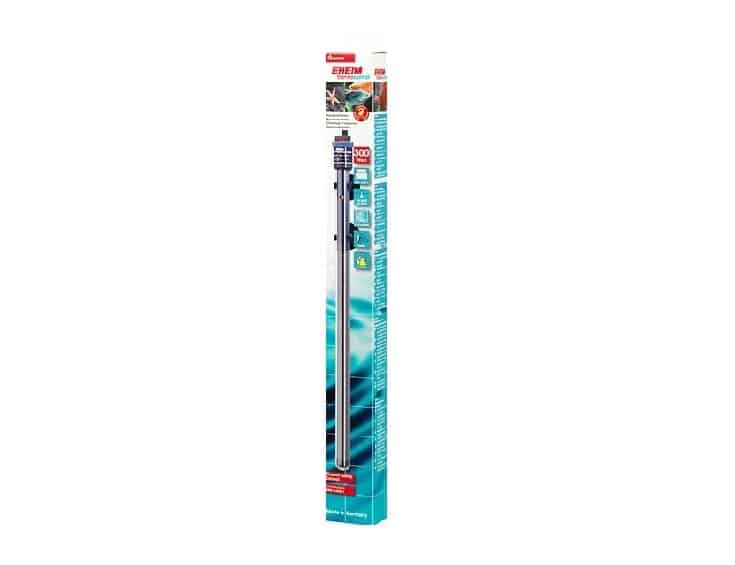 | Eheim Aquarium Heater |
| View Product |
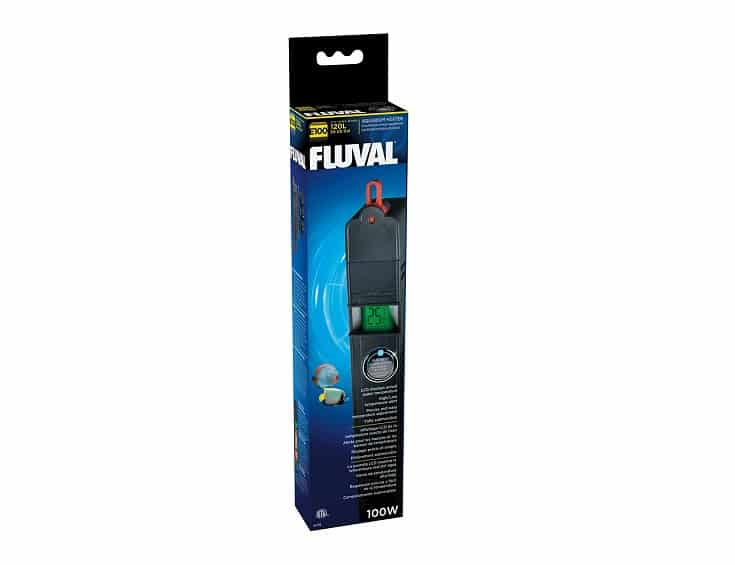 | Fluval E Electronic Heater |
| View Product |
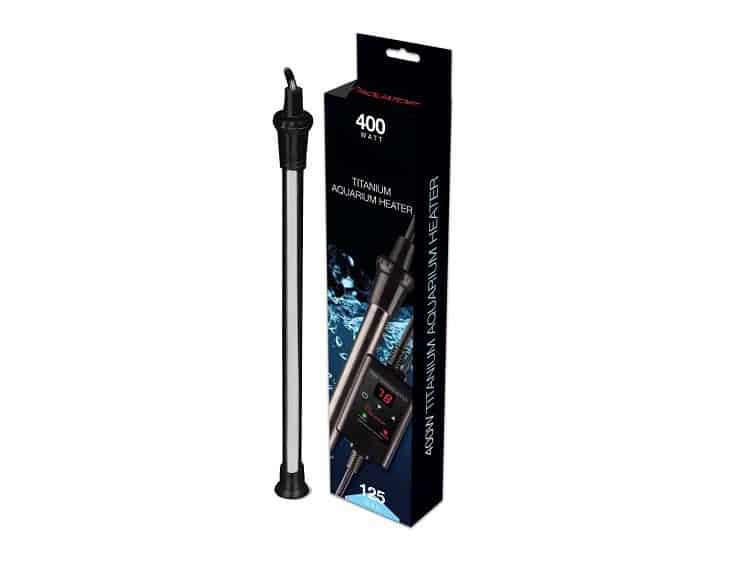 | AquaTop Titanium Heater |
| View Product |
What Is An Aquarium Heater?
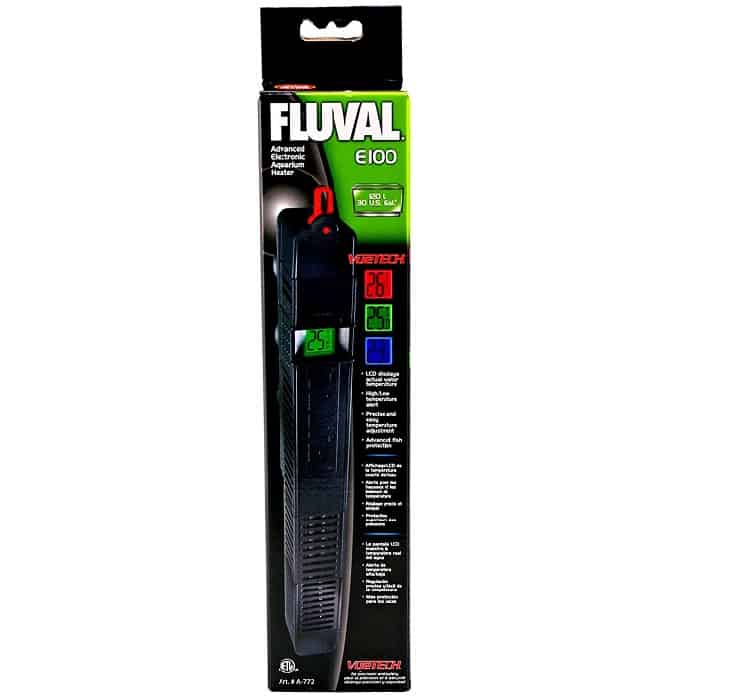
An aquarium heater is a small, simple piece of electrical equipment that warms the water in an aquarium.
Unless you want to keep coldwater fish species, you will need an aquarium heater to keep the water temperature in your aquarium at a level that’s acceptable to your fish. If the water becomes too cold or too warm, the fish will be stressed, and they may suffer from temperature shock, which weakens the fishes’ immune system, leaving them vulnerable to disease.
How Does An Aquarium Heater Work?
An aquarium heater works by converting electricity to heat. The heater warms the water around it, and the aquarium filter pump circulates the warmed water around the tank. For that reason, you should always position your heater next to the filter pump outlet.
Provided that the flow is strong enough, the heat generated by the heating unit should be evenly distributed throughout the fish tank. You can check that by placing a thermometer at the end of the tank farthest away from the heater. The temperature in that area of the tank should be the same as that directly adjacent to the heater.
Most good aquarium heaters are thermostatic and will automatically shut off once the temperature of the setting has been reached, so you don’t need to worry that the unit will overheat. Conversely, if the water surrounding the heater is cooler than the preset temperature, the heater should turn itself on automatically until it reaches the preset temperature again.
Too Much Heat!

In some countries and local regions, hobbyists have the opposite problem in that they live in a very hot climate, so the tank water becomes too warm. In that case, aquarium coolers can be used rather than heaters.
What About Very Large Tanks?
If you have a very large tank, you may find that keeping two heaters is beneficial, especially if the aquarium is in a cold room. That arrangement also gives you a backup plan, as if one heater fails, the second will maintain the temperature within the tank.
Place one heater at each end of the aquarium with a thermometer so that you can monitor the water temperature throughout the whole setup.
It’s generally accepted by experienced fish keepers that two heaters are better than using one super-powerful one.
How Does Heat Distribution Work?
There are three forms of heat distribution in a home fish tank:
Conduction
Conduction is the term used to describe the spread of heat from hot areas to cooler areas. When water is warmed, the water molecules become more active, spreading that energy through the surrounding water molecules as heat. Although water is a pretty good heat conductor, the majority of heat transfer will take place via convection and circulation.
Convection
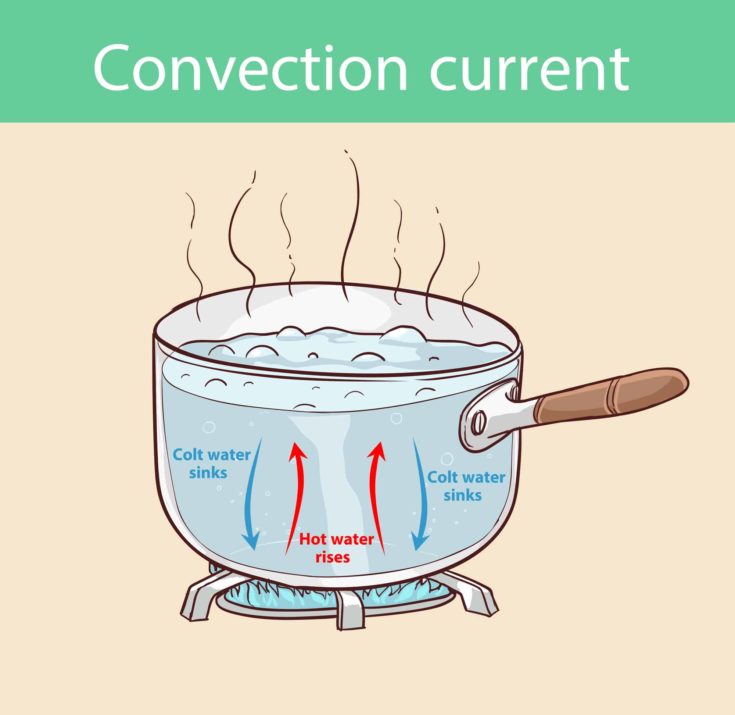
Convection happens when water becomes less dense and rises upward as it is heated, creating convection currents. The cooler water is displaced, and as it is less dense, it sinks.
Circulation
Circulation is the main way in which your aquarium water is warmed. The flow from your filtration unit’s pump circulates the water around the tank, carrying heat with it to all areas of the aquarium.
When positioning your aquarium heater, you want to put it where the water flow is high. However, you don’t want the newly heated water to be sucked straight back into the biofilter, as that could overheat the beneficial bacteria that you are cultivating there. So, place the heater close to the filter outflow so that the warm water is pushed along in the current to areas of the tank where the water is cooler.
A submersible heater should be positioned horizontally just above the substrate close to the filter discharge. To make the circulation even more efficient, add an air stone underneath the filter intake. That will pull denser cold water from the bottom of the tank upward with the bubbles into the filter and circulation stream.
Types Of Aquarium Heater
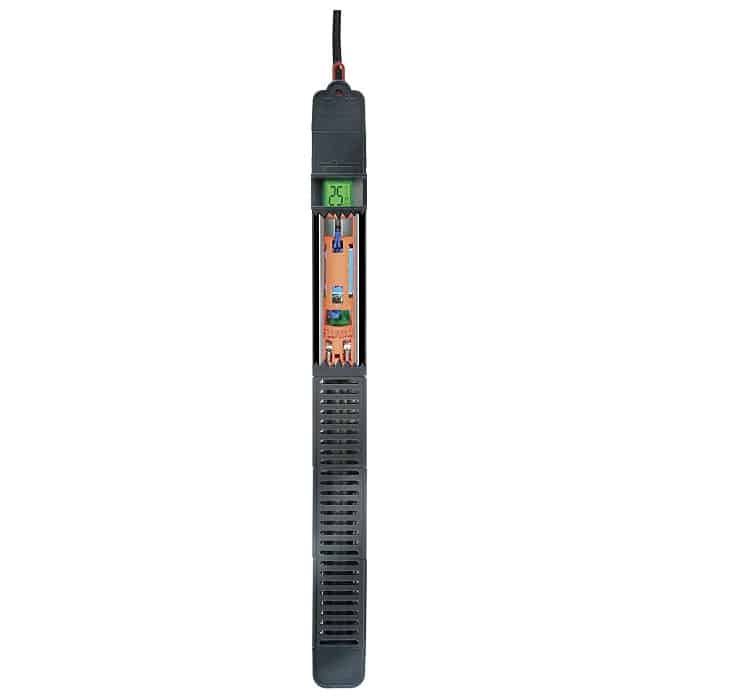
The type of aquarium heater that you choose depends on several factors, including the species of fish you keep, the size of your aquarium, and your personal preference. In this part of our guide, we look at the different styles of heaters that you can choose from, and we tell you how to pick the right one for your setup.
Hanging/Immersible Heater
As you probably guessed from its name, a hanging or immersible heater hangs over the top of the aquarium with the heating element sitting in the water. Hanging heaters are often included in beginner starter aquarium kits, and they tend to be the most popular option for beginners to the hobby.
Most fish tanks are designed with an aperture in the hood that allows the heater cable to pass through it so that you can hang the heater in the water. However, most immersible heaters are not as efficient as some other designs, and they are not recommended for use in saltwater or brackish setups where salt creep can be a problem.
Submersible Heater
It’s generally accepted that submersible heaters will help to keep the tank temperature more stable and consistent than immersible units.
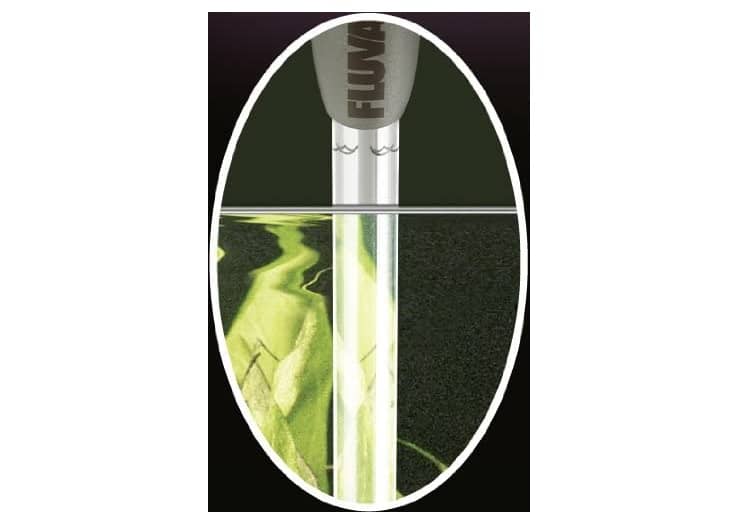
A submersible heater is designed to sit underneath the water. These devices are placed beside the filter inlet so that the water is heated as it returns to the tank.
Submersible heaters contain coiled elements that are protected by a tube made from toughened plastic or glass. Of the two, I prefer to use a plastic heater, as it is less likely to crack than glass if the unit overheats.
Submersible heaters typically have an LED light on the top that tells you when the unit is operational. That’s a valuable feature, as it tells you at a glance that the heater is working.
Substrate Heater
Substrate heaters were popular in the 90s, especially when used in heavily planted tanks, as this kind of unit creates gentle movement of water around the plant roots, helping to boost plant growth.
This style of submersible heater consists of wires that are affixed to the base of the tank underneath the substrate.
Although you can still find substrate heaters, they are not as popular these days as they once were, and they are also quite expensive to buy.
In-line Heater
The in-line heater fits between the aquarium filter or sump, and it works by heating the water as it is pumped back from the filter to the tank.
In-line heaters are generally made from special heat-proof plastic for safety. This style of heater is ideal for you if you keep fish or invertebrate species that tend to be destructive, such as Blue crayfish or some large cichlids.
Although in-line heaters are very efficient and they are quite popular with experienced hobbyists, there are a couple of drawbacks to this style of aquarium heater. First of all, in-line heaters are generally much more expensive than other styles. Also, the more units that are placed outside of the tank, the more scope there is for leaks.
Filter Heater
Some filter units, especially power filters and canister filters, are designed to work in conjunction with inbuilt heating elements. As the water passes through the filter system, it’s heated by the heating elements.
Factors To Consider When Choosing An Aquarium Heater
Now you know what styles of heater are available, you’ll need to know more about what features to look for when choosing the best aquarium heater to suit your aquarium.
Wattage
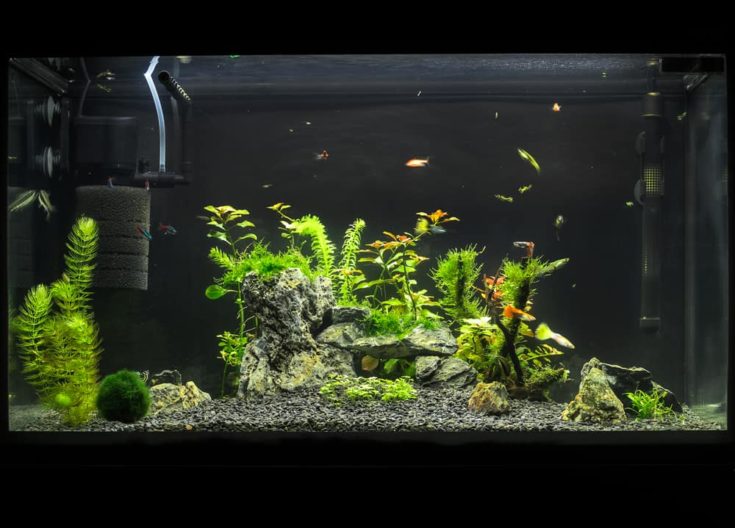
Perhaps the most important consideration when choosing a heater for your aquarium is the unit’s wattage. The generally accepted rule is that you should have 3.5 watts of power per gallon of water in your aquarium.
Aquarium heaters start from 10W, increasing in output right through to over 1,000W. Basically, the higher the wattage of the heater, the more power the unit puts out, and it’s vital that you choose a heater that suits the size of your tank.
For example, if the heater is too powerful for a small betta tank, the water will be too warm for the fish. Conversely, if the heater isn’t powerful enough for a large tank, the water will be too cold or it won’t be heated evenly throughout the habitat.
Temperature Range
Some heaters are built with a fixed temperature, whereas others allow you to select the temperature that you want from within a given range. I recommend that you choose an adjustable heater, especially if you keep fish that need a very specific water temperature.
Access To The Controls
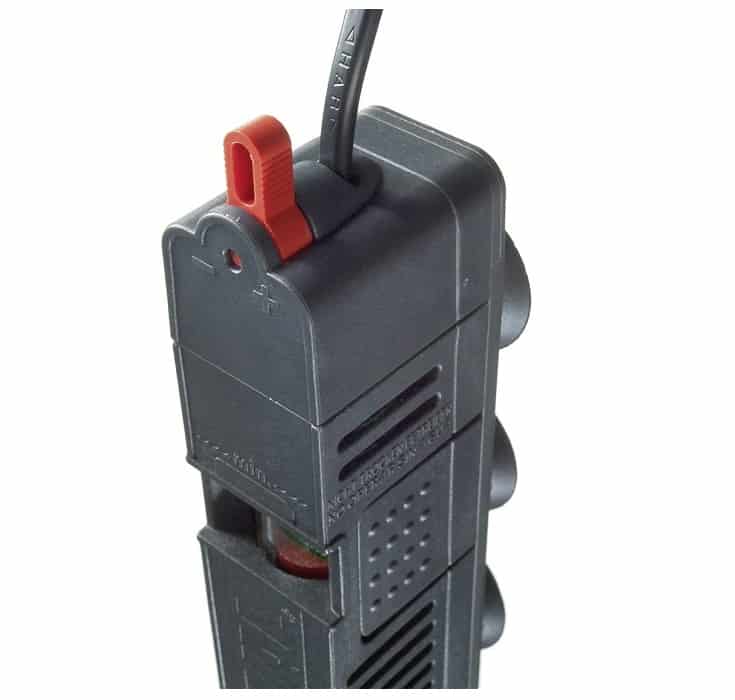
There’s nothing more frustrating than struggling to adjust the temperature control of a submersible heater. When choosing a heater for your tank, make sure that you can easily access the control knob and that it twists easily.
Some models of heating units have an external control device, which makes setting and adjusting the water temperature much easier.
Temperature Readability
The best aquarium heaters have clearly defined numerical temperature gauges that you can read easily, even when the device is submerged.
That being said, you should also have an accurate digital aquarium thermometer in the tank so that you can double-check the water temperature at a glance.
Safety Features

Obviously, placing anything electrical in the immediate vicinity of a fish tank full of water is potentially dangerous. So, you must make sure that your aquarium heater has the appropriate safety features.
First and foremost, the heater must be fully submersible. That should be taken as read, but you must make sure before you part with your cash. Needless to say, you must never use a heating device that is not specifically designed and built to be used in an aquarium.
An auto-shutoff function is a highly desirable feature to have in an aquarium heating device. That will automatically switch the heater off if the tank temperature gets too high or if the water level is too low. I prefer a heater that has a light indicator that shows you when the unit is active and heating the water. That alerts you to potential failure of the unit if it’s cool in the room and you’re concerned that the heater has stopped working.
Quick Product Reviews
Now that you know what to look for in a good aquarium heater, we’re going to review our five favorites.
1. Aqueon Pro 100 Submersible Aquarium Heater

- 100W
- 10 inch
- Temperature control setting
The Aqueon Pro 100 Submersible Aquarium Heater is a superb quality unit that we think represents outstanding value for money. It’s also one of the most reliable heaters we looked at.
The unit is fully submersible and is made from light, shatterproof material that won’t crack or splinter. There’s a power monitor light so that you can easily see when the unit is operating, and the device has a temperature adjustment dial that allows you to set the temperature within +/-1 degree Fahrenheit. The heater provides a temperature range between 60o and 88o Fahrenheit, which is suitable for virtually all tropical fish species.
For added user confidence, the heater features an automatic shutoff and overheat protection function, so you never need to worry about accidents when you’re not around.
| Pros | Cons |
|---|---|
|
|
2. Cobalt Aquatics Neo-Therm Heater

- 25W, 50W, 75W, 100W, 150W
- 6.5 inch
- One-touch temperature control setting with LED display
The Cobalt Aquatics Neo-Therm Submersible Aquarium Heater keeps your tank water at a stable temperature 24/7. The heater is accurate to within +/- .5 degrees, enabling you to choose the perfect water temperature for your fish, and the clear LED display shows both the temperature that you’ve set, as well as the water temperature in the tank.
For your peace of mind, the unit has an inbuilt overheat shutdown feature, and the heater has a shatterproof case that the manufacturer claims is virtually indestructible. The heater is designed for use in freshwater and saltwater tanks.
| Pros | Cons |
|---|---|
|
|
3. Eheim Jager Thermostat Aquarium Heater

- 300W
- 19 inch
- Temperature selection wheel
Eheim makes a wide range of high-quality, well-engineered aquarium accessories, including heaters. This particular unit is the largest in the range of the Jager model with a 300 wattage.
The heater is fully submersible and is easily adjusted via an easy-to-use, illuminated control wheel on the top of the unit. The heating element is encased in sturdy laboratory glass, and there’s an auto-shutoff safety feature for your peace of mind. The unit comes equipped with a double suction cup holder, making setup a hassle-free process.
You can use the Eheim heater in freshwater and saltwater environments.
| Pros | Cons |
|---|---|
|
|
4. Fluval E Electronic Heater

- 100W
- 10 inch
- LED temperature display
The Fluval E Electronic Heater can be positioned horizontally or vertically in the aquarium and secured to the glass by means of suction cups. There’s also a side glass mounting adapter if you need it.
When the heater is operating normally, the digital, LCD temperature readout will change color if the water temperature varies by +/-2 degrees Fahrenheit or greater from the preset temperature. The adjustment lever is very easy to use, and you can set the temperature in 0.5° increments. For increased accuracy, the unit has dual temperature sensors.
Fish safety is paramount and with that in mind, the heater has an integrated fish guard and an auto shut-off feature.
| Pros | Cons |
|---|---|
|
|
5. AquaTop Titanium Heater w/Controller

- 100W to 500W
- 15 inch
- External temperature control unit
The Aquatop TH-C submersible aquarium heater is made from tough, durable titanium. The neat, compact design makes the heater extremely versatile when it comes to placing it in the aquarium. Like most heaters, this one attaches to the side of the tank via two suction cups.
The unit has a separate, remote temperature probe that ensures accurate readings, and the easy-to-read external control unit makes setting the desired temperature an easy job. The power cords supplied with the unit are plenty long enough for the heater to be placed in a sump if you want to keep it out of sight.
| Pros | Cons |
|---|---|
|
|
In Conclusion
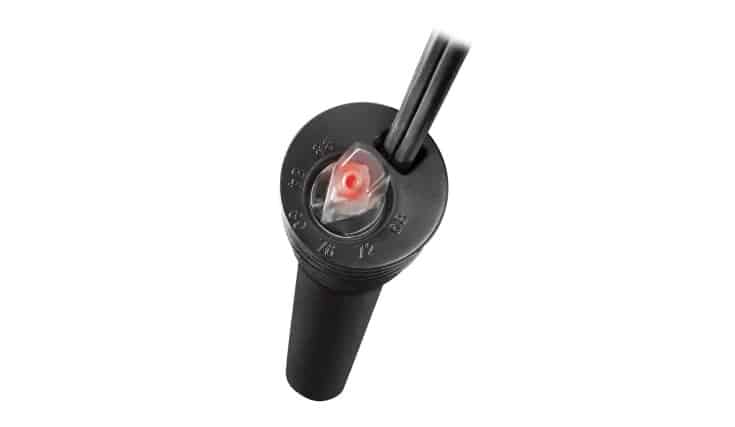
Of the five aquarium heaters that we reviewed in this guide, our winner is the Aqueon Pro 100 Submersible heater.
This heater ticks all the boxes when it comes to everything you want from a tank heater. The heater is fully submersible, and the unit is constructed from light, shatterproof material for safety. The heater shuts off automatically in case of overheating. The power monitor light shows you when the unit is working, and you can set the temperature you want via an easy-to-use dial.
All in all, this aquarium heater represents excellent value for money, both in terms of quality build, reliability, and safety.
